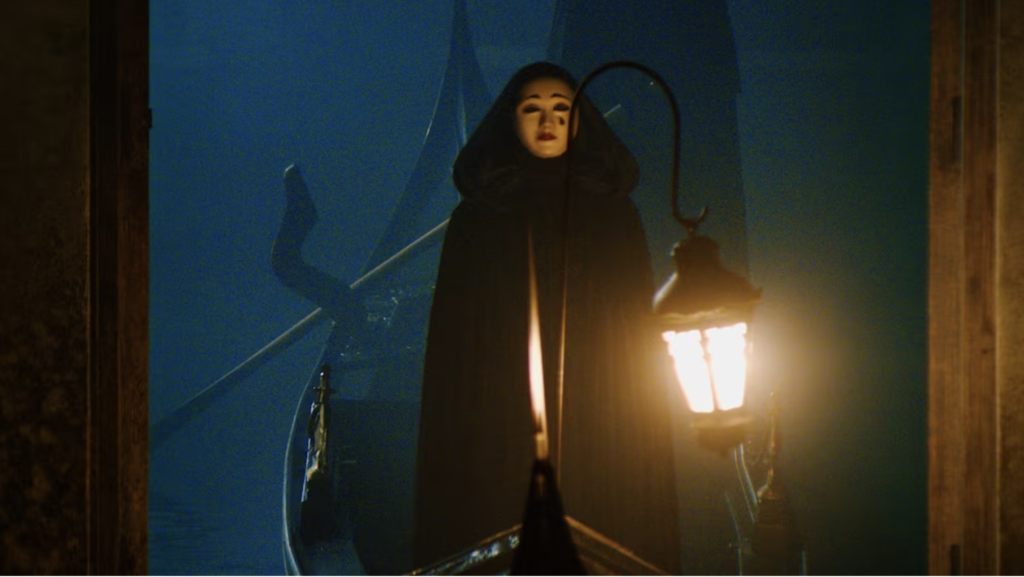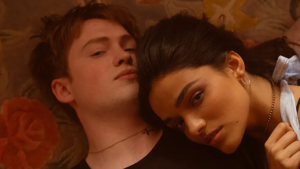Review: A Mild Haunting in Venice

Image Courtesy of ABC News
By Dean Robbins
Director and star Kenneth Branagh’s previous Hercule Poirot, the mustachioed Belgian detective, film adaptations are based on two of Agatha Christie’s earlier books: Murder on the Orient Express and Death on the Nile. His newest adaptation, A Haunting in Venice, now playing exclusively in theaters, is based on Hallowe’en Party (1969), one of the last Hercule Poirot novels written by Christie. It comes from an immensely different time, separated from the first two books by World War II a few decades earlier and the Tate-LaBianca murders a few months prior. Perhaps as a result, Hallowe’en Party is set not in Venice but in England and contains darker themes, including torrid affairs, child murder, and a violent obsession with gardening.
So, too, is A Haunting in Venice easily the darkest entry in the filmmaker’s trilogy, both in tone and in being set almost entirely at night in a dim Venetian palazzo. However, it lacks the torrid affairs, child murder, and gardening of the book and replaces them with jump scares, a new setting, and a delirious doctor (Jamie Dornan) haunted by memories of liberating a Nazi concentration camp (which ultimately became a confusing plot point). The result is a movie with the appearance of something dark, thorny, and twisted but is, on the screen, a mildly thrilling haunted house.
Unlike Branagh’s previous Poirot entry Death on the Nile, which I called “absolutely miserable” last year, A Haunting in Venice is actually shot in a real place and contains a fairly consistent troupe of players. The palazzo and the ten-ish minutes we get of Venice, on the whole, are suitably atmospheric. The film draws us in early with creepy gondola rides through the canals and a Brothers Grimm-esque shadow puppet show, which was about a supposed curse on the palazzo.
Compared to the first two films, the cast is lighter on headlining actors. That is not to knock the cast, but rather to say that 20th Century Studios is less likely to get butts in seats because of Jamie Dornan than Johnny Depp or Gal Gadot in the first two adaptations. Dornan is sadly the cast’s weakest link and never quite sells his shell-shocked character. My favorite cast member is Dornan’s character’s son Leopold, played by Jude Hill, who got his break in Branagh’s Oscar-winning Belfast (2021). Leopold is a child filled with the grim reality of life, often to both emotional and comedic lengths. Besides Dornan, the other big draws in the cast are the recently Oscar-winning Michelle Yeoh, who plays a small role well, and Tina Fey, who plays an author obsessed with Poirot. The cast is rounded out by Kelly Reilly of Yellowstone fame, Camille Cottin, Emma Laird, Kyle Allen, and Riccardo Scamarcio.
Despite significantly dumbing down the source material, the screenplay by Michael Green is never a bore. As someone who sat through Death on the Nile, I am grateful for that. The camera work by Branagh stalwart and Haris Zambarloukos is some of his best, often pushing characters uneasily to the edge of frames and adopting James Wan-esque handheld work for the scarier material. Beyond the cinematography, there is little to say about the film, positively or negatively. The score is barely noticeable, the costumes are a little stagey but get the job done, and the set decoration is never flashy but always adds to the atmosphere.
The mystery’s resolution excites me in the moment, yet feels less interesting the more I think about it. Branagh and Green seem more keen on pitting Poirot’s cold logic against the superstition of faith and the supernatural. For a while, the movie seemed to be going down the path of atheistic propaganda. Green luckily adds enough nuance to avoid the necessity for condemnation by religious viewers. The religious themes stop just before being both truly offensive and substantively compelling. The viewer is there for a whodunit, and Branagh delivers a serviceable one. And of final note, anyone can watch A Haunting in Venice, even if they have not seen the first two films. There is no noticeable connection or continuity between the movies. Their interconnectedness is nominal. A Haunting in Venice is now playing in theaters.






